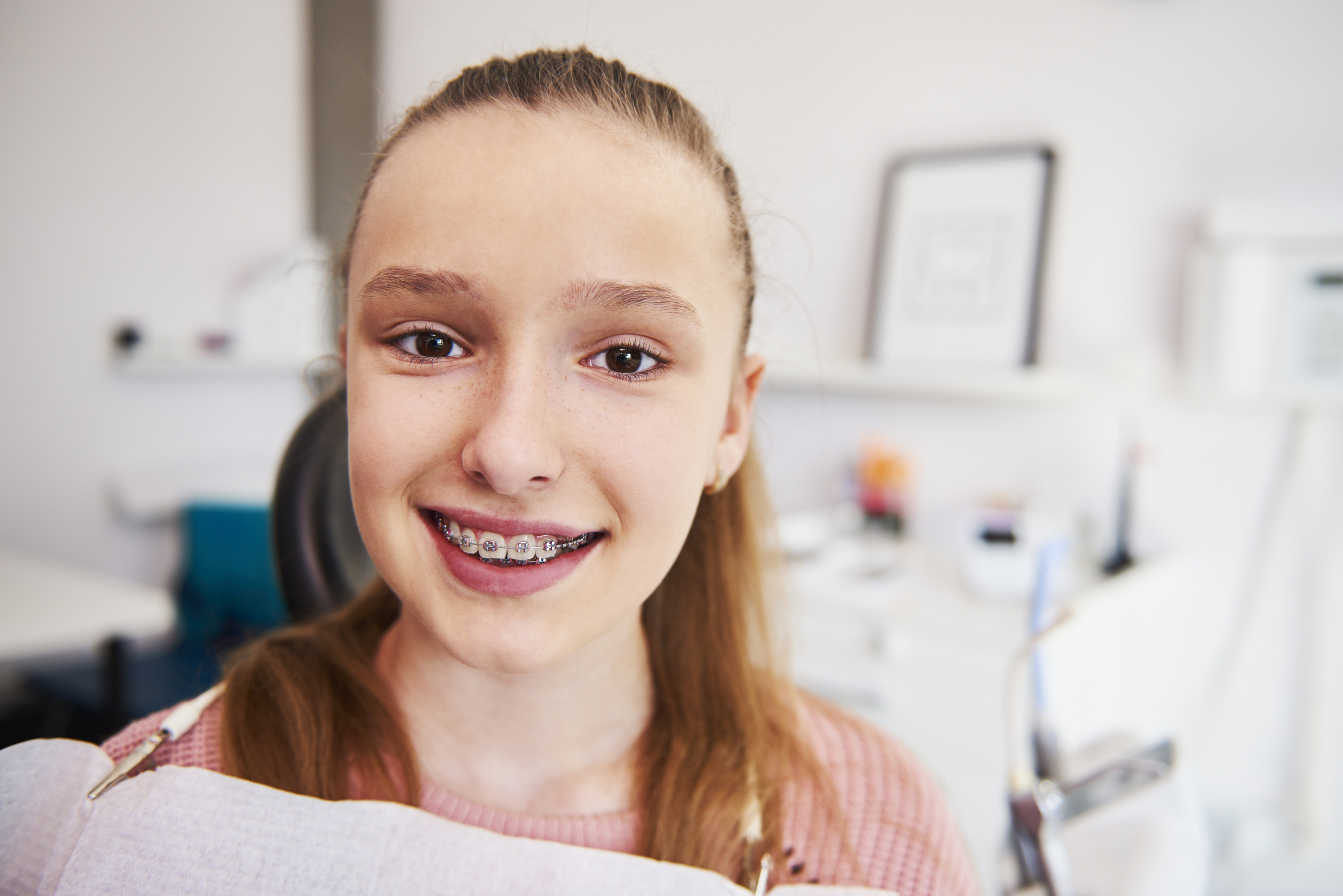24.11.22


Free NHS orthodontic treatment for children has always been in high demand. To ensure that dentists can prioritise the children that need treatment the most, there are strict rules about who qualifies for orthodontics on the NHS.
The Covid-19 pandemic has stretched NHS dentists to capacity, making it difficult for an already stressed system to keep up with demand. Dentists can see fewer patients in a day due to enhanced cleaning requirements.
This means that waiting lists for NHS orthodontic treatment are much longer than before the pandemic. If you are curious about getting free braces for your child on the NHS, read on to learn more about the requirements and what you can expect.
Yes, braces are free on the NHS under certain conditions. Orthodontic treatment must be medically necessary, not just cosmetically necessary. This means that a dentist will need to assess your child’s teeth to determine if they qualify for treatment.
If they do qualify for treatment, it won’t start straight away. They will be added to a waiting list and then have to wait to be called forward for treatment. This means there is little room for flexibility when it comes to starting treatment. This can be awkward for teenagers, as they often want to complete their treatment while still in high school.
Despite what parents think they know about braces, teenagers today aren’t as self-conscious about wearing them. In some social circles, braces are a trend and they aren’t something to be
To access free treatment on the NHS, your child also has to be 18 or under at the start of the treatment to qualify. Unfortunately, this means that many teens will “age out” of the free treatment window while they are on the waiting list.
Adults cannot get braces for free on the NHS. They can only choose private treatment and will have to pay for this. It’s often possible to find interest-free credit payment plans to help you to manage the cost of your treatment.
Only a dentist can decide if your child qualifies for treatment. They will be assessed on the index of orthodontic need, which is a standard measure used throughout the NHS. The grades are as follows:
Grade 1 means you have good alignment and don’t need treatment
Grade 2 means you have minor misalignments, but it won’t be problematic
Grade 3 means you have misalignments, but they are not medically problematic
Grade 4 means there are extensive irregularities and treatment is required
Grade 5 means there are severe irregularities that will impact your oral health if left untreated.
Only children deemed to be a grade 4 or 5 will qualify for treatment. Only your dentist can decide if they qualify for treatment. It can be very stressful for parents of children with Grade 3 teeth, as they often feel that it is simply a matter of opinion.
However, there is a checklist that all dentists will go through, and they won’t exclude a child from orthodontics if they need treatment. If your child is a grade 3 case, you might consider private treatment to ensure the issue doesn’t get any worse.
If your child doesn’t qualify for treatment, you will have to choose a private orthodontist for treatment. There is also the risk that your child could qualify for treatment, but then turn 19 before they make it to the top of the waiting list.
Choosing private treatment does offer some advantages over NHS orthodontics. Those who undergo treatment with the NHS will know that they receive excellent care, and the orthodontic results will be the same. However, private treatment offers some advantages for those that can afford it.
You’ll have a wider choice of treatment options, including fixed and removable braces. Your child can also choose to have clear brackets and wires instead of metal braces.
Treatment can start much sooner. If orthodontic issues are left untreated, the teeth will continue to shift out of alignment. This means that when they do start treatment, it could take longer to achieve the desired results.
Treatment can start on your schedule. With NHS orthodontics, treatment needs to start when your child reaches the top of this list. This could clash with holidays and other special occasions when your child might not want to adjust to their new braces.
You can spread the cost. With an interest-free payment plan, you can spread the cost of treatment, so you don’t need to pay a large sum upfront.
You can access treatment if your child, even if your dentist hasn’t deemed orthodontics to be medically necessary. A straighter smile can help to build your child’s confidence as they head out into the world – it’s not only about cosmetic looks.
Your child could have treatment at the same time as a friend. Children often feel less self-conscious about their braces if they know someone else is going through the same thing. If you know that one of their friends also needs braces, you could arrange to start treatment at the same time.
Your dentist will be able to advise you on current waiting list times and give you an idea of how likely you are to be able to secure NHS treatment. In some areas, waiting lists are as long as 4 years, so if your child is already over the age of 14, it might not be worth waiting.
NHS waiting lists for orthodontics have always been long, but these problems have been further aggravated by the Covid-19 pandemic. If you’re concerned that your child might age out of the window for free orthodontic treatment, get in touch with our team today. We can arrange a consultation to discuss the options available to you and see if private orthodontic treatment might be a more suitable option.